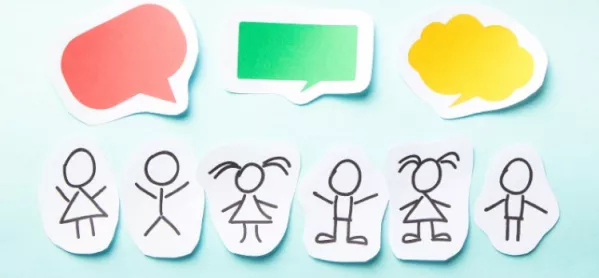We have all been there: everything you do, say or try is wrong.
It is extremely demotivating and does not give us any love or desire for the problem we are trying to solve.
This could easily be the class in an English as an additional language (EAL) classroom where students are grappling with a whole new language, as well as new lesson concepts or themes.
As such, teachers with EAL learners need to know when to correct and when to stand back.
Thankfully, while doing a research project for my PGCE on this very topic, I found that the literature on language-based error correction had a consensus theme throughout it: you correct errors at different times depending on the language skills you want the students to develop.
Teaching EAL students: Correcting errors
Here are the two fundamentals to approach this issue:
1. Immediate error correction
It seems obvious: you correct the students’ errors in real-time to stop mistakes become engrained.
An example of this in practice would be during the stage when you are presenting new language to the class, a student mispronounces a word. You can correct their pronunciation in order to make them more accurate in their speech.
This will ensure that your students’ accuracy in the language develops in the right way.
So far so simple - but you have to do it delicately.
It’s key to avoid using negative language like “you’re wrong” or bluntly stopping them in front of their classmates.
Instead, you need to make it feel inclusive and provide a correction that will help across the class, perhaps by guiding them to the correct pronunciation by saying something like: “Is it shicken or is it chicken?”
Ideally, it’s much better to reward the students for error correction with praise or a reward system. A simple way to praise students for error correction is when they make an error, highlight to them that they need to rethink their answer, (you can simply say “Are you sure?” or change your facial expression).
Then you can give them positive feedback once it is corrected by saying something like: “That is great, you remembered the exact way to say that word. Well done!”
2. Delayed error correction
Why would you delay the correction of errors that your students make? It is simple; you are aiming to build their fluency.
This means your students have the flexibility to make mistakes without being constantly stopped and interrupted.
You would use this approach perhaps while students are in the flow of an activity or are being very productive with their language.
Of course, though, you still need to make sure that errors do not go uncorrected.
So, for example, while the students are in a group discussion you would monitor them and listen in for the language mistakes they are making and keep a note for yourself, while letting them continue their debate.
Then, at the end of the activity, you put the errors up on the board and correct them as a class.
This is especially good as you can ask the class what the errors that have been made are, giving them a chance to be reflective and correct the errors themselves.
Finding the right balance
You shouldn’t focus too much on accuracy or on fluency. You have to balance both to get the most out of language development.
If you put too much emphasis on accuracy, students will not be able to develop more natural speech and flow.
If you focus too much on fluency, their sentence structures or pronunciation could be so off that it becomes impossible to understand what they are saying.
In my experience, correcting errors at the right times and in student-centred ways becomes second nature once you start to actively think about these two strands together.
The students also enjoy this, coming to see it as almost a game where they try to get their ideas about what is wrong in a sentence or phrase in as fast as possible, usually making more “mistakes” while doing so.
But this is great and to be encouraged - after all, we learn by making mistakes.
Gregory Adam is a primary teacher at Nord Anglia Chinese International School in Shanghai. He released his first book last year, Teaching EFL, ESL & EAL. A Practitioner’s Guide





